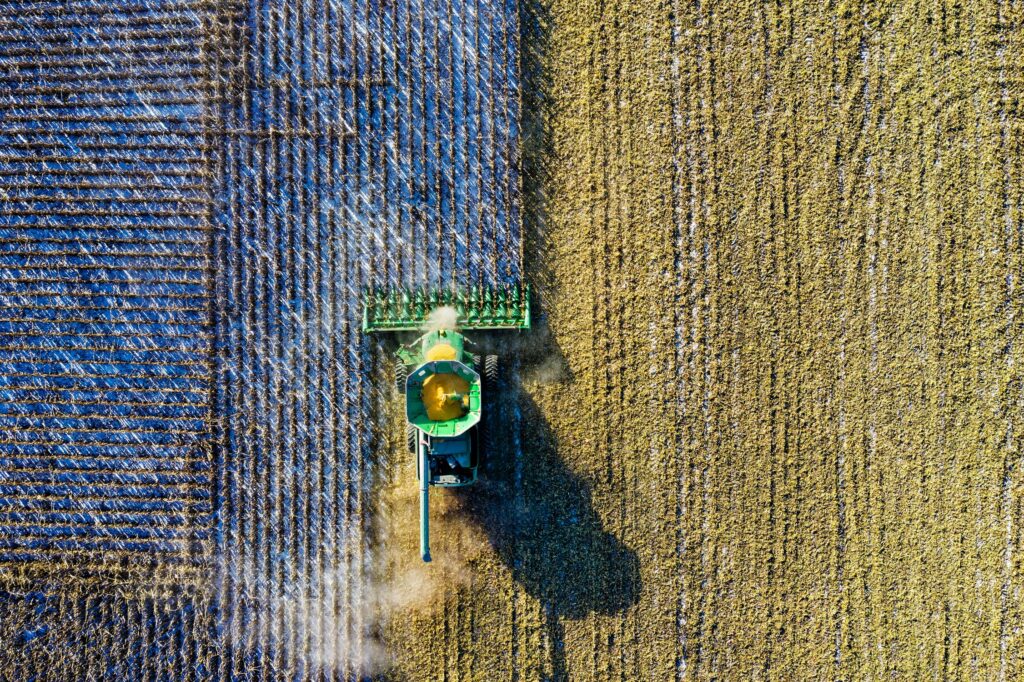Agriculture is another sector where drones are completely changing the way operations are carried out in many different aspects. Unmanned aerial vehicles (UAVs) not only monitor agriculture, but also forestry, land resources and water resources.
Drones have been instrumental in advancing agriculture, partly because traditional farms tend to cover so much space, which makes it hard to be able to get an accurate picture of what is actually going on in the ground. Unmanned aerial vehicles can provide maps that can be used when making plans for the next growing season. This is crucial in order to keep up with increasing demand. In fact, agriculture needs to continue to revolutionize the way it produces food as the demand for food will continue to challenge farmers.
These aerial robots make it possible for farmers to be able to address issues of hydration by measuring the water content of soil. This can help farmers identify whether they have drainage issues or irrigation problems.
Drones can also be used to help farmers measure how fast their crops are growing in remote fields.
Multi-disciplinary sensors and GPS navigation enable owners to manage their farms more effectively. The following are some of the other ways drones are helpful:
- Produce precise 3D maps allowing early soil analysis, which can be used to plant seed in planting patterns.
- Identify pests, disease and weeds. Optimize pesticide usage through early detection.
- Detect the presence of crop-wrecking bugs and then deploy hyper accurate pesticide applications instead of spraying an entire field.
- Spray pesticides to scare away crop-eating birds.
- With GPS technology, drones can be used to take livestock out to pasture and to keep the herd together.
- Help with land management as multispectral imagery will show whether crops need to be rotated in fields.
- Control crop irrigation by identifying areas where water stress is suspected and if extra drainage or water is needed.
- View damage to crops from farm machinery and make repairs or replace problematic machinery.
- Count plants and determine spacing issues, allowing estimation of crop yield.
- Drones can spray crops, covering large areas using pre-planned maps.
- Monitor livestock and find sheep or cattle if lost.
- Heat sensors can detect the temperature of livestock, the presence of water, water temperature, and for surveillance and emergency response if someone is injured in a remote field.
- Survey fencing and farm buildings.
- Provide data on soil fertility to refine fertilization by detecting deficiencies.
- Check for diseases and then analyze the grade, stress, leaf respiration, yield, etc., to improve wine and grapes.
Because drones can scan the ground and maintain the right distance from the crops, they can spray the most precise or accurate amount of liquid, which can be evenly distributed. It is estimated that aerial spraying is five times faster than the spraying by tractors.
Access the drone map (Normalized Difference Vegetation Index—NDVI) which is a simple graphical indicator that can be used to analyze remote sensing measurements to assess whether the target being observed contains live green vegetation or not. This enables the workers to determine the overall health of vegetation and direct others to the crops needing the most attention and care.
Researchers in Japan have created small drones the size of insects which can pollinate plants and will assist with indoor pollination and assist the real honeybee population.
Because unmanned vehicles are small, fast, and flexible, they can fulfill a number of different jobs in any agricultural setup. Drones can be used to deliver important materials to crops and make short runs to leave the necessary additives behind and be used for crop dusting.
Historically, the reason farm and ranching professions have been so challenging is because landowners typically have such a vast area–often many miles and thousands of acres–to check on crops and livestock. When the weather is less than ideal, it often means traversing by foot, car, or tractor down muddy roads and fields. Drones skip such conditions as they examine crops and look for signs of disease, or even apply chemicals like fertilizer or herbicide. Such drones also makes it much easier to keep an eye on all of their equipment and property.
As farms are rapidly getting significantly larger, smaller family operations are finding it difficult to compete with these massive corporate-controlled gigantic farms. Yet there are more “small” farms than ever, even though the vast majority of America’s crops are provided by large subsidized farms.
The family farm has been declining for generations and continuing to do so, even to a greater extent at this time. In fact, more than 100,000 farms were lost between 2011 and 2018 with 12,000 of those lost between 2017 and 2018* (Small American Farmers Debt Crisis Extinction). This decline has been happening for many reasons: periodic trade wars, severe weather (associated with climate change), commodity prices related to globalization, political polarization and competition from corporate farmers.
Because drone technology is able to monitor a large variety of crops at a great expanse quickly, at a significantly lower cost, smaller farms may have a better chance of surviving this very competitive business.



